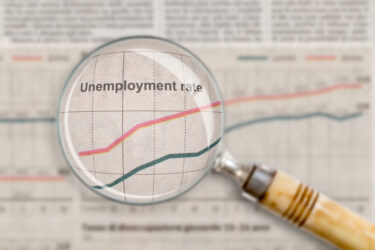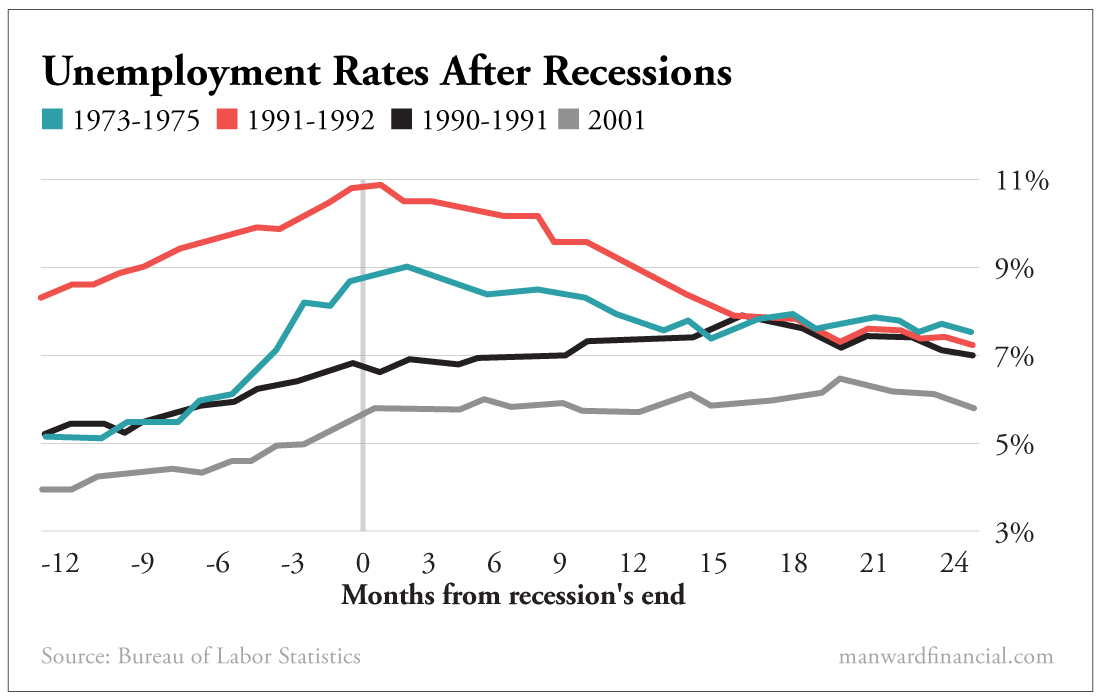This Is the Next Piece of the Economy to Break
Andy Snyder|July 20, 2022

The mainstream press and the political class that feeds off of it say we can’t be in a recession. The jobs market is too good.
A recession requires slipping GDP and rising unemployment, they say.
But we say just wait. The jobs market isn’t as good as it looks.
It’ll be the next piece of the economy to break.
A trip in the Manward time machine will show why.
In 2002, we had hair. And we didn’t make noises when we stood up. But the economic situation was much the same as it is today. Back then, though, investors were excited about the end of a tough recession.
But there was just one worry. The jobs market was still slumping.
The unemployment rate would not come down.
How can the economy truly be recovering, the talking heads asked, if there are 2.1 million fewer jobs at the “end” of the recession than there were at the beginning?
It had many investors sitting on the sideline… and missing a heck of a rally.
Bad Data
Ben Bernanke was a lowly governor at the Federal Reserve at the time. He took to the stage in November of 2003 to discuss the lingering employment slowdown.
His first thought – as any good Fed worker’s would be – was to blame the data.
Washington (and therefore the money press) tends to rely on two main sources of jobs data – a payroll survey and a household survey.
“An important and puzzling fact is that, although neither survey suggests that the U.S. job market is currently strong,” Bernanke said, “the two surveys provide quite different estimates of the extent of job loss in the past three years.”
The big difference?
The payroll survey counts the number of jobs. The household survey counts the number of people with jobs.
In other words, if we have two jobs, the payroll survey counts us twice… but the household survey counts us just once.
That’s a big difference.
Bernanke, being the government wonk he is, urged folks to follow the payroll survey. After all… it painted a rosier picture.
Now… let’s go back to the future – to the recently released June jobs figures.
The numbers were lauded by the politicos. The payroll figure, at 372,000, came in nearly 100K higher than expected.
Woohoo!
“See,” the White House said, “things aren’t so bad.”
But what about that other report?
Ruh-Roh
Hold your nose for this one. The household survey showed the largest drop in jobs – more than 300K – since the big pandemic crash in March of 2020.
Using a bit of logic, the discrepancy between the two data points tells us the number of folks with two (or more) jobs has surged.
Imagine that… folks working two jobs at a time when prices are surging.
The numbers back it up. In June, the number of folks with multiple jobs soared by 239K.
It’s proof that things aren’t all that rosy.
And if the idea in the chart below holds true, they’re about to get uglier.

Again, despite the state-accepted rhetoric these days, we shouldn’t be seeing unemployment rates peaking at this point in the recession. Jobs are a lagging indicator.
The chart tells us that throughout recent history, unemployment has peaked after GDP started rising again and the end of the recession was declared.
We shouldn’t be seeing soaring figures. Not yet. But we will.
Bottom line… Forget about the folks saying this can’t be a recession because the jobs market is strong.
They’re oh so conveniently ignoring the data that matters… and overlooking decades of history that tell us the worst is yet to come.
Unemployment will get worse before it gets better.
For investors unaware of the facts… the news could hurt.

Andy Snyder
Andy Snyder is an American author, investor and serial entrepreneur. He cut his teeth at an esteemed financial firm with nearly $100 billion in assets under management. Andy and his ideas have been featured on Fox News, on countless radio stations, and in numerous print and online outlets. He’s been a keynote speaker and panelist at events all over the world, from four-star ballrooms to Capitol hearing rooms.



